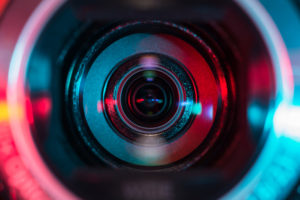INFOGRAPHIC: The Pros & Cons of Periscope & Facebook Live
 So it’s finally over for Meerkat. The live-streaming app that made such an impact in the meetings and events industry over the last 18 months has just been pulled off the app stores. The app was the first one to generate excitement around live-streaming as people enjoyed a new and easy way of both sharing and watching live broadcasts from events on their smartphones. But its success was short-lived when Meerkat found itself caught up in a battle with Twitter’s rival service – Periscope. And when Facebook Live was launched earlier this year, all hope was lost.
So it’s finally over for Meerkat. The live-streaming app that made such an impact in the meetings and events industry over the last 18 months has just been pulled off the app stores. The app was the first one to generate excitement around live-streaming as people enjoyed a new and easy way of both sharing and watching live broadcasts from events on their smartphones. But its success was short-lived when Meerkat found itself caught up in a battle with Twitter’s rival service – Periscope. And when Facebook Live was launched earlier this year, all hope was lost.
Read: 7 Mistakes to Avoid When Using Facebook Live at Events
Live streaming has been one of the most interesting technology trends in our industry this year and its impact is set to grow, based on the investment we’re seeing pouring in – both from vendors and event planners. It is a powerful marketing tool that allows you to instantly reach out to your audiences, as well as build and engage with new ones too. Attendees seem to be up for the game too. Many of them now are using their phones to share their experiences and stream events live on their social media networks through apps like Periscope, Facebook Live, Instagram Stories and Snapchat Live Stories. YouTube will also join this list soon, as the company prepares to launch its own live-streaming option to its mobile app later on this year.
So live video is definitely here to stay. The ability to watch and interact in real-time is proving to become more and more popular and the figures prove it. According to Social Media Today, people spend 3 times longer watching a video that is live compared to one that’s pre-recorded. Last month, we ran a poll asking event planners which social live-streaming app they preferred using around their events and the two that kept topping the list were Periscope and Facebook Live. In fact, Facebook’s app has made huge inroads with public events this year – the biggest being the Rio 2016 Olympic games where an estimated 277 million unique people had 1.5 billion interactions on the platform throughout the two-week event. And according to Omnicore Agency, Periscope has almost two million active users a day. Pretty impressive stuff.
No event is too big or too small when it comes to live streaming but both Facebook and Periscope do have some different features that can be better suited for one type of event over another. Facebook Live, for example, is very easy to set up and live streams can be used for Facebook posts or ads around your event – however, it does impose a 90-minute limit to your live streams. Periscope, on the other hand, has no time limit but videos are deleted within 24 hours.
Due to the unique features of each platform, it is important to understand the benefits and nuances of each so you can use it to your success. For a top line overview of the pros and cons of both Facebook Live and Periscope, have a look at the infographic below:
https://www.theverge.com/2016/6/23/12021232/youtube-launches-live-mobile-streaming-app
https://www.thedrum.com/news/2016/08/22/how-facebook-live-became-big-part-rio-olympics
https://www.socialmediatoday.com/marketing/top-5-facebook-video-statistics-2016-infographic


